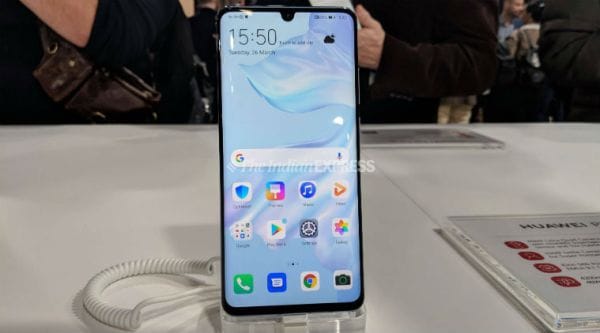
The Huawei P30 Pro is everything you would expect it to be. A solid smartphone overall, one feature that really stands out is the camera of the P30 Pro. Last year’s P20 Pro shine with its triple-camera setup and allowed the company to pitch the camera phone against the likes of Google Pixel 3 XL and iPhone XS. With the P30 Pro and its quad-camera setup, Huawei is trying to position its latest flagship closer to a DSLR.
In demo zones after the launch, Huawei executives went all out to convince everyone that the P30 Pro as a phone excels both in looks and in camera quality. With what we have seen so far, I do like the way the P30 Pro appears to check off all the boxes for those who want a phone that pushes the envelope when it comes to mobile photography.
Here’s a quick look at the P30 Pro, which has been confirmed to make its debut in India as early as next month.
Huawei P30 Pro hands-on: Four cameras on the back
No, Huawei is not trying to beat anyone by adding multiple cameras just for the sake of it. The P30 Pro’s four cameras have a purpose, to say the least.
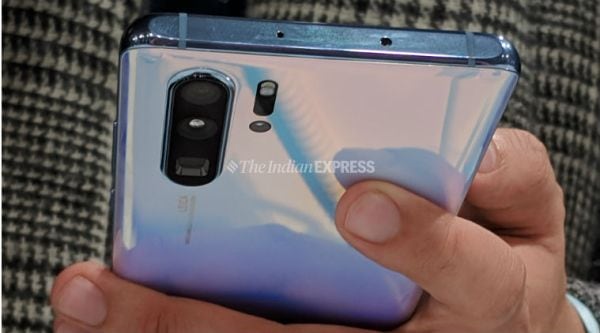
To first understand how the four cameras work, you need to understand the basics. Most image sensors use what’s called a Bayer filter, or RGB. This essentially uses 25 per cent blue, 25 per cent red and 50 per cent green to create perfect colours when you click a picture.
With the P30 Pro, Huawei says it swap out the green colour for yellow, as yellow offers 40 per cent more light, which basically translates to better pictures. Obviously, allowing more light means the camera can take better pictures in low-light conditions. If you have noticed, the P30 Pro has the highest light sensitivity on any smartphone, which surprises over 400,000 (409,600 ISO, to be exact). The demos, we saw on the stage, were impressive, really impressive.
Huawei P30 Pro: The basics
Co-developed with Leica, the camera setup consists of a 40MP SuperSpectrum lens with an f/1.6 aperture and optical image stabilisation (OIS), a 20MP ultra-wide-angle lens with an f/2.2 aperture, an 8MP periscope zoom lens and a time-of-flight (ToF) lens sits to the right.
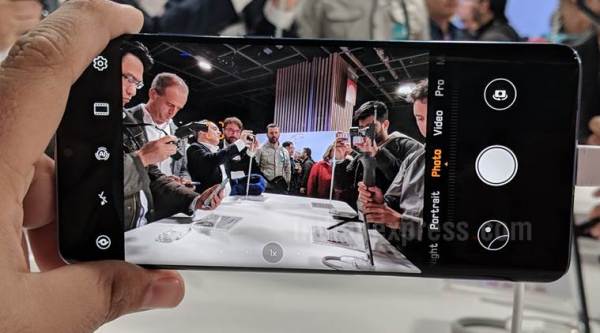
This combination is rather interesting. The primary 40MP lens, by default, takes shots in 10MP. Pictures shot with the 40MP camera lens had depth and colours were accurate. The wide-angle lens is more for fun and we already know how it works.
The 8MP SuperZoom camera lens makes the P30 Pro different from all existing flagship phones. So basically, it is like a periscope which uses prism for a near-lossless image at 5x optical zoom — that translates to 10x hybrid zoom and up to 50x digital zoom. In comparison, the iPhone XS has only 2x optical zoom.
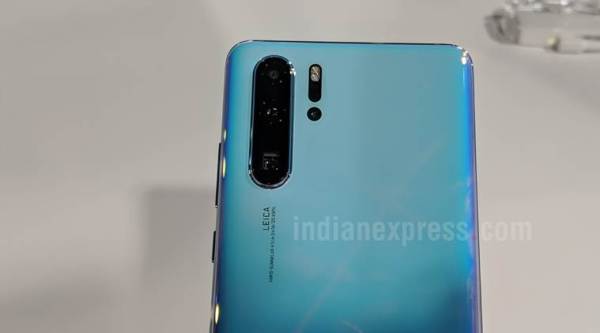
The 5x optical zoom impresses, though I would like to make it clear that my testing was fairly limited to the controlled lighting of the demo zone. I wish I had more time to test the 5x optical zoom mode on the P30 Pro.
The fourth lens, or a time-of-flight camera, is used to capture depth data. It understands how long it takes light to travel from the subject to the camera. This results in improved portrait shots. The few portrait shots I took were decent – but as I said earlier I would like to reserve my judgement for the final review.
Huawei says it has improved its Artificial Intelligent Stabilization (AIS). This should enhance night shots, something I am looking forward to try it myself.
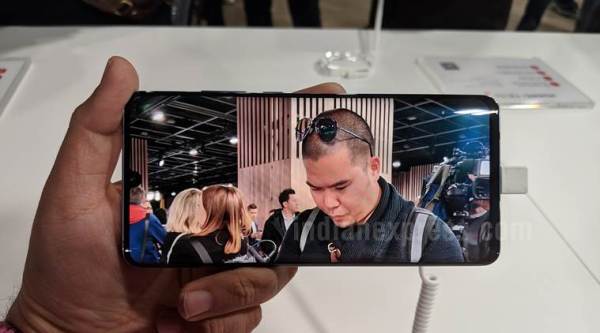
Another major feature the company is introducing with the P30 Pro is what it calls dual-view video, allowing a video to be taken with a 40MP sensor and the telephoto camera at the same time. The feature will be made available via a software update. A 32MP camera adorns the front for taking selfies and attending video calls.
Huawei P30 Pro hands-on: Design, display
The P30 Pro is visually appealing and the gradient colour rear panel gives the phone a lively and cheerful feel. The handset’s build is exceptionally great, though the waterdrop-style notch at the top center of a device where a 32MP selfie camera feels a bit dated. The phone will be available in multiple colour options, but my favourite colour has to be the orange finish.

The device has a 6.47-inch OLED screen, with curved sides. The display is sharp and colourful but no match to the Galaxy S10+’s curved AMOLED wide quad HD+. That said, the P30 Pro’s OLED panel is beautiful and I have no major complaints about it.
Taking cues from the Mate 20 Pro, Huawei has added an in-display fingerprint scanner in the P30 Pro as well. I couldn’t test out the in-display fingerprint scanner’s responsiveness in my hands-on time.
Huawei P30 Pro hands-on: Performance, battery
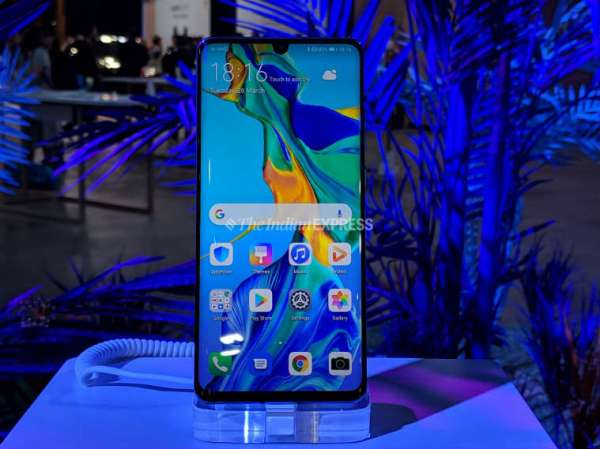
The P30 Pro uses the same Kirin 980 processor that powers the Mate 20 Pro. This is a top-of-the-line chipset competing directly with the Snapdragon 855, Qualcomm’s flagship processor. While some may say the Kirin 980 already started to look dated in comparison to the Snapdragon 855, we all know Huawei’s 7-nanometer Kirin 980 chip is capable of offering reasonable performance.
The base variant of the P30 Pro has 8GB RAM paired with 128GB of internal storage. The phone is also available with 256GB and 512GB storage options. Remember, the P30 Pro (just like the Mate 20 Pro) uses a Nano Memory card slot (NM), which is Huawei’s own proprietary external storage card. The P30 Pro runs EMUI 9.1 based on Android 9.0.
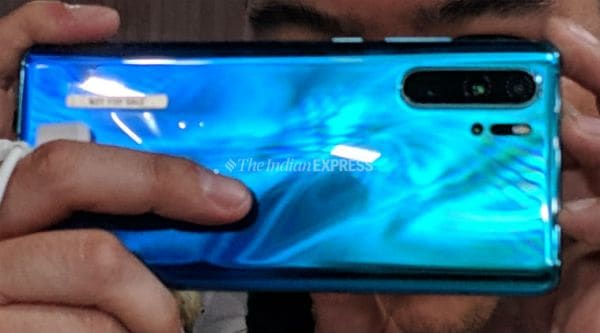
The flagship smartphone has a 4200mAh battery, which should last a day or two on a single charge. It also supports Huawei’s 40W Huawei SuperCharge, which should get you juice from 0 to 70 per cent within 30 minutes of charging. And yes, you will also find 15-watt fast wireless charging, along with the ability to wirelessly charge other devices. The Mate 20 Pro was the first smartphone to use the reverse wireless charging feature. The Galaxy S10 also has the same reverse wireless charging feature.
Huawei P30 Pro hands-on: Early impression
The cameras on the P20 Pro were widely appreciated, and Huawei is hoping it can surpass everyone’s expectations with the P30 Pro, which is an out-and-out camera-centric smartphone. What I really liked about the P30 Pro’s quad-cameras is that Huawei has, at least, talked about how multiple cameras could offer more versatility. I am curious to compare the P30 Pro’s quad-cameras against the Google Pixel 3 XL, which uses a single camera lens to deliver an exceptional performance. Expect our review of the Huawei P30 Pro to be out in the coming weeks.
The author is in Paris on the invite of Huawei India.